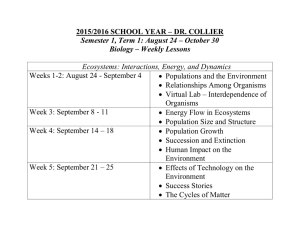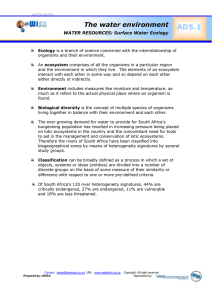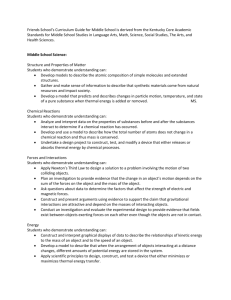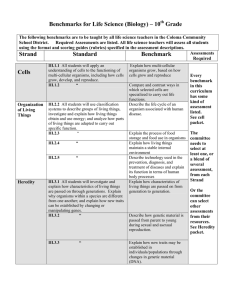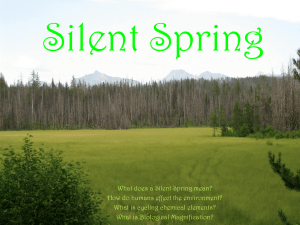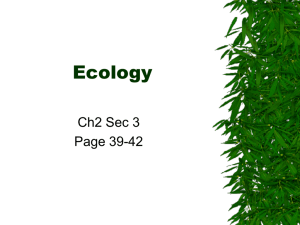6th Grade Science
advertisement
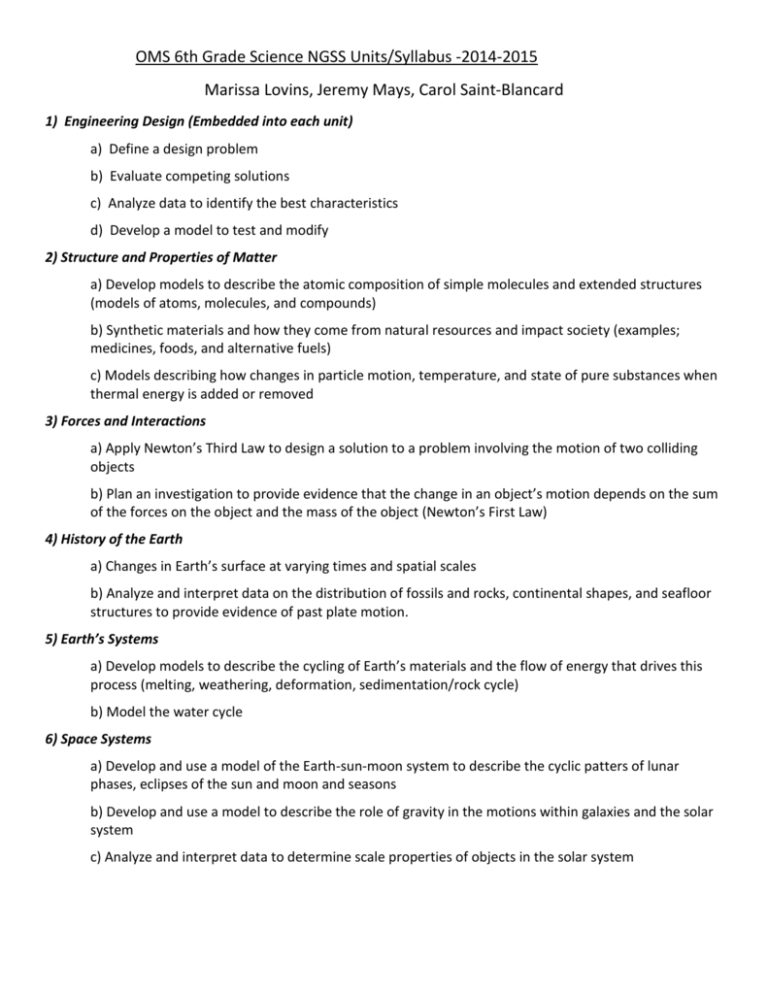
OMS 6th Grade Science NGSS Units/Syllabus -2014-2015 Marissa Lovins, Jeremy Mays, Carol Saint-Blancard 1) Engineering Design (Embedded into each unit) a) Define a design problem b) Evaluate competing solutions c) Analyze data to identify the best characteristics d) Develop a model to test and modify 2) Structure and Properties of Matter a) Develop models to describe the atomic composition of simple molecules and extended structures (models of atoms, molecules, and compounds) b) Synthetic materials and how they come from natural resources and impact society (examples; medicines, foods, and alternative fuels) c) Models describing how changes in particle motion, temperature, and state of pure substances when thermal energy is added or removed 3) Forces and Interactions a) Apply Newton’s Third Law to design a solution to a problem involving the motion of two colliding objects b) Plan an investigation to provide evidence that the change in an object’s motion depends on the sum of the forces on the object and the mass of the object (Newton’s First Law) 4) History of the Earth a) Changes in Earth’s surface at varying times and spatial scales b) Analyze and interpret data on the distribution of fossils and rocks, continental shapes, and seafloor structures to provide evidence of past plate motion. 5) Earth’s Systems a) Develop models to describe the cycling of Earth’s materials and the flow of energy that drives this process (melting, weathering, deformation, sedimentation/rock cycle) b) Model the water cycle 6) Space Systems a) Develop and use a model of the Earth-sun-moon system to describe the cyclic patters of lunar phases, eclipses of the sun and moon and seasons b) Develop and use a model to describe the role of gravity in the motions within galaxies and the solar system c) Analyze and interpret data to determine scale properties of objects in the solar system 7) Weather and Climate a) Collect data to provide evidence for how the motion and complex interactions of air masses result in changes in weather conditions. b) Develop and use a model to describe how unequal heating and rotation of the Earth causes patterns of atmospheric circulation that determine regional climates. 8) Matter and Energy in Organisms and Ecosystems a) Analyze and interpret data to provide evidence for the effects of resource availability on organisms and populations of organisms in an ecosystem (carrying capacity, limiting factors) b) Develop a model to describe the cycling of matter and flow of energy among living and nonliving parts of an ecosystem (conservation of matter, food chains, food webs, energy pyramids) 9) Interdependent Relationships in Ecosystems a) Construct an explanation that predicts patterns of interactions among organisms across multiple ecosystems (Relationships – predator, prey, symbiosis, mating)


